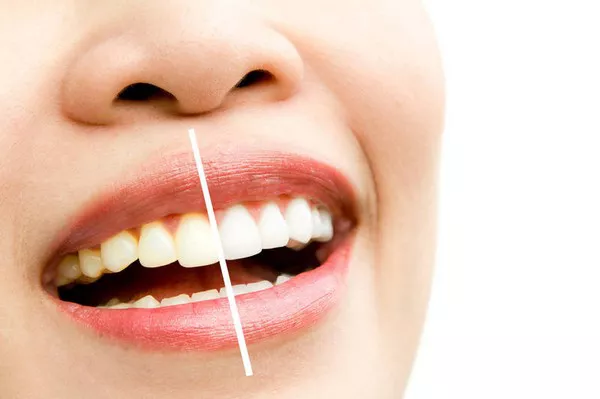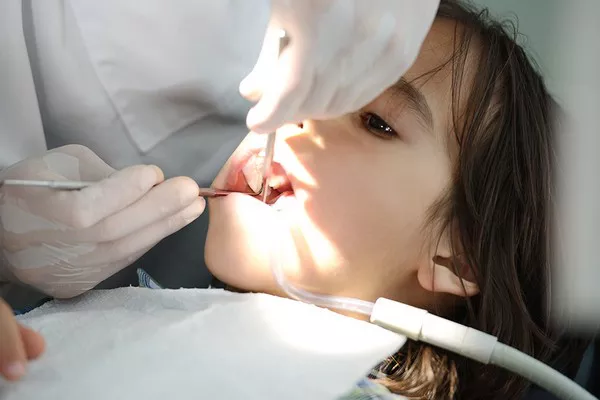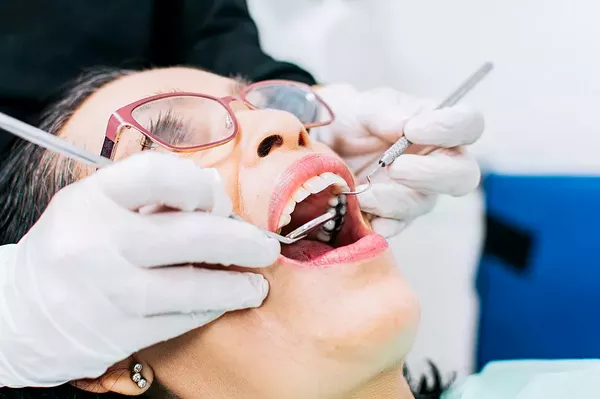A bright and dazzling smile is often associated with good oral health and confidence. However, the persistent issue of yellow teeth can leave many individuals seeking effective solutions to regain a whiter smile. While there are numerous over-the-counter products claiming to whiten teeth, the question that often arises is, “Can a dentist whiten yellow teeth?” In this comprehensive article, we will explore the professional interventions available for teeth whitening, the science behind the procedures, and what individuals can expect when seeking the expertise of a dentist.
Understanding the Science of Tooth Color
To comprehend the efficacy of professional teeth whitening, it’s essential to understand the science behind tooth color. The outer layer of teeth, known as enamel, is semi-translucent and primarily responsible for the whiteness of teeth. Underneath the enamel lies dentin, which is naturally yellowish in color. The combination of enamel and dentin influences the overall appearance of teeth.
Yellowing of teeth can occur due to various factors, including:
Surface Stains: Accumulation of stains from foods, beverages, and tobacco on the enamel.
Intrinsic Stains: Discoloration that originates from within the tooth, often caused by factors such as medications or developmental conditions.
Age-Related Changes: Natural wear and tear of enamel, revealing more of the yellow dentin, as individuals age.
Can a Dentist Whiten Yellow Teeth?
Yes, dentists can effectively whiten yellow teeth through a variety of professional treatments. These treatments are designed to address both surface stains and intrinsic discoloration, providing patients with a brighter and whiter smile. Let’s explore some of the common professional teeth whitening options:
In-Office Teeth Whitening:
In-office teeth whitening, also known as chairside or power bleaching, is a popular and effective method. The process typically involves the following steps:
a. Initial Assessment: The dentist examines the patient’s teeth and discusses their expectations and concerns.
b. Preparation: The dentist protects the gums and soft tissues, leaving only the teeth exposed.
c. Application of Whitening Agent: A high-concentration whitening gel, usually containing hydrogen peroxide or carbamide peroxide, is applied to the teeth.
d. Activation: Some in-office whitening procedures use a special light or laser to activate the whitening agent, enhancing its effects.
e. Multiple Sessions: The process may involve multiple sessions, with each session lasting around 15-20 minutes.
f. Final Assessment: Once the desired level of whitening is achieved, the dentist evaluates the results.
In-office teeth whitening is known for providing rapid and significant results, making it a preferred choice for those seeking immediate improvements in tooth color.
Take-Home Whitening Kits:
Dentists may also prescribe take-home whitening kits for patients who prefer the convenience of whitening their teeth at home. These kits typically include custom-fitted trays and a whitening gel with a lower concentration of bleaching agents than those used in the office. The process involves:
a. Impressions: The dentist takes impressions of the patient’s teeth to create custom-fitted trays.
b. Instructions: The patient is provided with detailed instructions on how to apply the whitening gel and use the trays.
c. Duration: Treatment duration varies but generally involves wearing the trays for a specified period each day over several weeks.
While take-home kits offer flexibility, they may take longer to produce noticeable results compared to in-office treatments.
Over-the-Counter Whitening Products:
Over-the-counter whitening products, such as whitening toothpaste, strips, and gels, are available without a prescription. While these products may provide some level of improvement for mild surface stains, they often contain lower concentrations of whitening agents than professional treatments.
It’s important to note that the efficacy of over-the-counter products can vary, and they may not be suitable for addressing more significant discoloration or intrinsic stains.
The Science Behind Professional Teeth Whitening
Professional teeth whitening relies on the principles of oxidation to break down stains and lighten the color of teeth. The active ingredients in whitening agents, such as hydrogen peroxide or carbamide peroxide, release oxygen molecules when they come into contact with the teeth. This oxygen penetrates the enamel and dentin, effectively breaking down the molecules responsible for staining.
In in-office whitening procedures, the use of special lights or lasers is thought to enhance the activation of the whitening agent, potentially speeding up the process. However, the effectiveness of light-activated systems is a subject of ongoing research and debate within the dental community.
Factors Influencing the Success of Professional Teeth Whitening
Several factors can influence the success of professional teeth whitening treatments. These include:
Type and Severity of Stains:
The type and severity of stains play a significant role in determining the success of teeth whitening. Surface stains from coffee, tea, or tobacco are generally more responsive to whitening treatments than intrinsic stains caused by factors like medications or developmental conditions.
Overall Oral Health:
The health of a patient’s teeth and gums can impact the success of whitening treatments. Individuals with gum disease or untreated cavities may need to address these issues before pursuing teeth whitening.
Patient Compliance:
Patient compliance with the prescribed treatment plan is crucial for achieving optimal results. Following the dentist’s instructions, whether for in-office or take-home treatments, contributes to the success of the whitening process.
Whitening Agent Concentration:
The concentration of the whitening agent used in the treatment influences the speed and extent of the whitening process. In-office treatments typically use higher concentrations for quicker results.
Post-Whitening Care:
Adopting post-whitening care practices, such as avoiding staining foods and beverages and practicing good oral hygiene, can help maintain the results of teeth whitening over time.
Addressing Intrinsic Stains and Other Considerations
While professional teeth whitening is highly effective for many individuals, intrinsic stains or discoloration caused by certain medications or developmental conditions may present challenges. In such cases, alternative cosmetic dentistry options may be considered, such as:
Dental Veneers:
Dental veneers are thin shells, often made of porcelain, that are custom-fitted and bonded to the front surfaces of teeth. Veneers can effectively cover intrinsic stains, providing a brighter and more uniform appearance.
Cosmetic Bonding:
Cosmetic bonding involves the application of a tooth-colored resin to the teeth, addressing both surface and intrinsic stains. This non-invasive procedure can improve tooth color and shape.
Laser Whitening:
Laser-assisted teeth whitening, as mentioned earlier, involves the use of a laser to activate a whitening agent applied to the teeth. While primarily used for surface stains, it may be considered in certain cases.
Consulting with a dentist is crucial for determining the most appropriate treatment based on the nature of the stains and the individual’s overall oral health.
Maintaining Whiter Teeth: Post-Whitening Care
Achieving a whiter smile through professional teeth whitening is a significant accomplishment, but maintaining the results requires ongoing care and attention. Here are some post-whitening care tips:
Good Oral Hygiene Practices:
Continue to practice regular and thorough oral hygiene, including brushing at least twice a day and flossing daily. Maintaining a clean and healthy oral environment helps prevent new stains from forming.
Avoid Staining Substances:
Limit the consumption of foods and beverages known to cause staining, such as coffee, tea, red wine, and tobacco products. If these items are consumed, rinse your mouth with water afterward to minimize their impact.
Regular Dental Checkups:
Schedule regular dental checkups to monitor the health of your teeth and address any emerging issues promptly. Your dentist can provide guidance on maintaining the results of teeth whitening.
Touch-Up Treatments:
Depending on the individual and the nature of the stains, periodic touch-up treatments may be recommended. These can help refresh and maintain the whiteness of teeth over time.
Customized Maintenance Plans:
Work with your dentist to create a customized maintenance plan that aligns with your oral health needs and lifestyle. This may involve a combination of at-home care and occasional professional treatments.
Addressing Concerns and Expectations
Before undergoing professional teeth whitening, individuals may have specific concerns and expectations. It’s important to address these with the dentist during the initial consultation. Common concerns and considerations include:
Tooth Sensitivity:
Some individuals may experience increased tooth sensitivity during or after whitening treatments. Dentists can recommend desensitizing agents or adjust the concentration of the whitening agent to minimize sensitivity.
Treatment Duration:
The duration of professional teeth whitening treatments can vary based on the method used. In-office treatments typically yield faster results compared to take-home kits.
Cost Considerations:
The cost of professional teeth whitening can vary depending on the method, location, and the dentist’s expertise. Discuss the cost considerations and available payment options with the dentist before proceeding.
Realistic Expectations:
While professional teeth whitening can produce significant improvements, it’s essential to have realistic expectations. The extent of whitening may vary among individuals, and complete elimination of intrinsic stains may require additional cosmetic procedures.
Conclusion
In conclusion, dentists can indeed whiten yellow teeth through professional and scientifically-backed teeth whitening procedures. Whether through in-office treatments, take-home kits, or a combination of both, individuals seeking a brighter smile have effective options available. Understanding the science behind tooth color, addressing different types of stains, and maintaining post-whitening care are essential components of a successful teeth whitening journey.
For those with intrinsic stains or more complex cosmetic concerns, consulting with a dentist can help determine the most suitable approach, which may involve alternative cosmetic dentistry options such as veneers or bonding. With the guidance of a dental professional and a commitment to ongoing oral care, individuals can achieve and maintain a radiant and confident smile that reflects optimal oral health.































